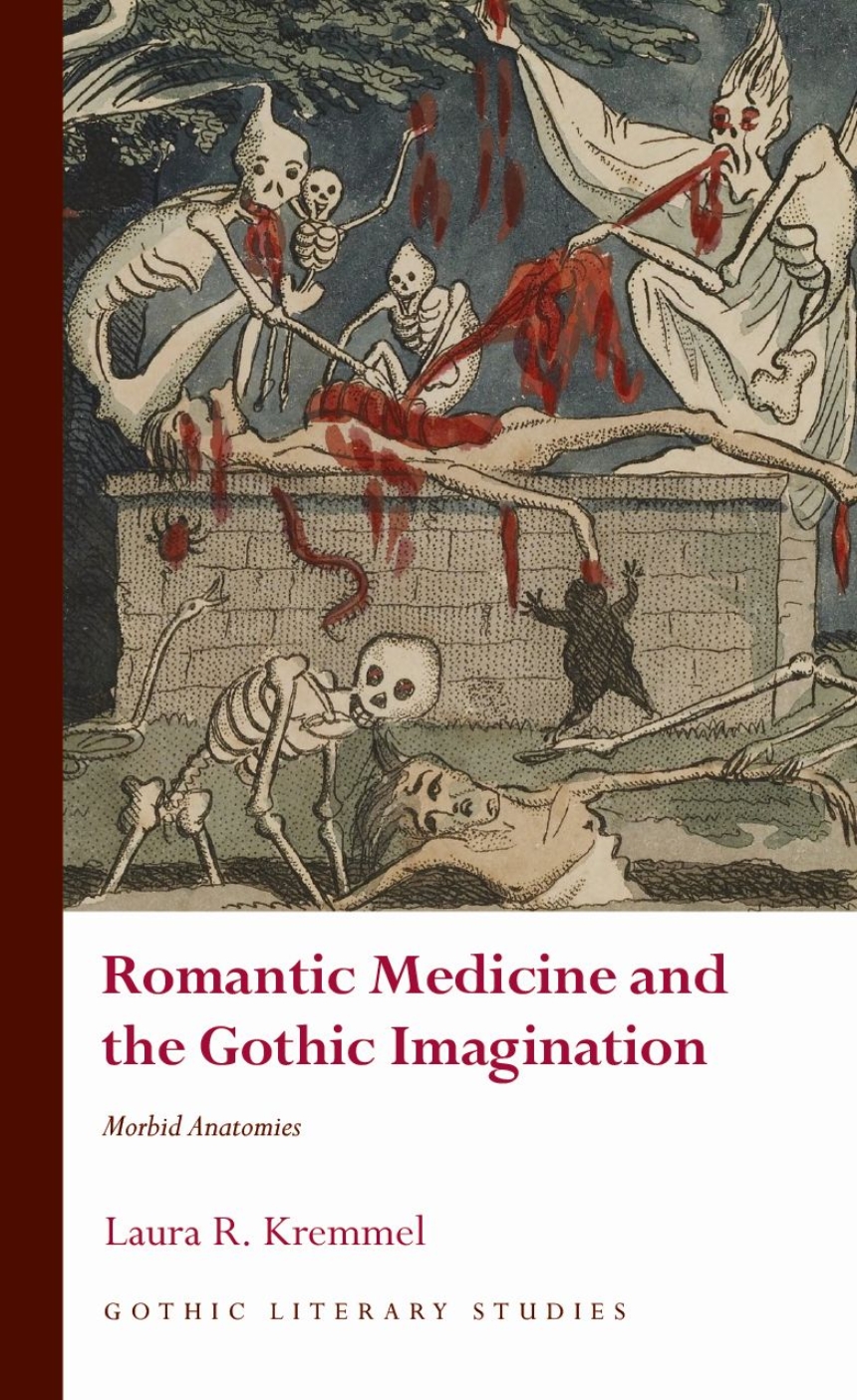9781786838483
Distributed for University of Wales Press
Romantic Medicine and the Gothic Imagination
Morbid Anatomies
An account of the intersection of the Gothic and the medical imaginations in the Romantic era.
This book demonstrates a little-studied crossover between the Gothic imagination and the medical imagination in the Romantic period. Unafraid to explore the gore and uncertainty typical of medical experimentation, Laura R. Kremmel argues, Gothic novels, short stories, poetry, drama, and chapbooks expanded the possibilities of medical theories by showing what they might look like in a speculative space without limits. In comparing the Gothic’s collection of unsavory tropes to morbid anatomy’s collection of diseased organs, Kremmel shows that the Gothic’s prioritization of fear and gore gives it access to non-normative bodies, shifting medical and narrative agency to bodies considered powerless. Each chapter pairs a familiar gothic trope with a critical medical debate; the result is to give silenced bodies power over their own narratives.
This book demonstrates a little-studied crossover between the Gothic imagination and the medical imagination in the Romantic period. Unafraid to explore the gore and uncertainty typical of medical experimentation, Laura R. Kremmel argues, Gothic novels, short stories, poetry, drama, and chapbooks expanded the possibilities of medical theories by showing what they might look like in a speculative space without limits. In comparing the Gothic’s collection of unsavory tropes to morbid anatomy’s collection of diseased organs, Kremmel shows that the Gothic’s prioritization of fear and gore gives it access to non-normative bodies, shifting medical and narrative agency to bodies considered powerless. Each chapter pairs a familiar gothic trope with a critical medical debate; the result is to give silenced bodies power over their own narratives.
272 pages | 5 1/2 x 8 1/2 | © 2022
Literature and Literary Criticism: General Criticism and Critical Theory
Reviews
Table of Contents
Acknowledgements
Introduction: The Laboratory of the Gothic Imagination
Chapter 1: Reanimated Corpses, Blood, and the Gothic Vital Element
Chapter 2: Anaesthetic Skeletons and the Pain of Melancholy
Chapter 3: Counterfeit Corpses and Evaded Dissection
Chapter 4: The Devil and the Disability Narrative
Chapter 5: Contagious Narratives and Gothic Vaccination
Conclusion
Notes
Bibliography
Index
Introduction: The Laboratory of the Gothic Imagination
Chapter 1: Reanimated Corpses, Blood, and the Gothic Vital Element
Chapter 2: Anaesthetic Skeletons and the Pain of Melancholy
Chapter 3: Counterfeit Corpses and Evaded Dissection
Chapter 4: The Devil and the Disability Narrative
Chapter 5: Contagious Narratives and Gothic Vaccination
Conclusion
Notes
Bibliography
Index

